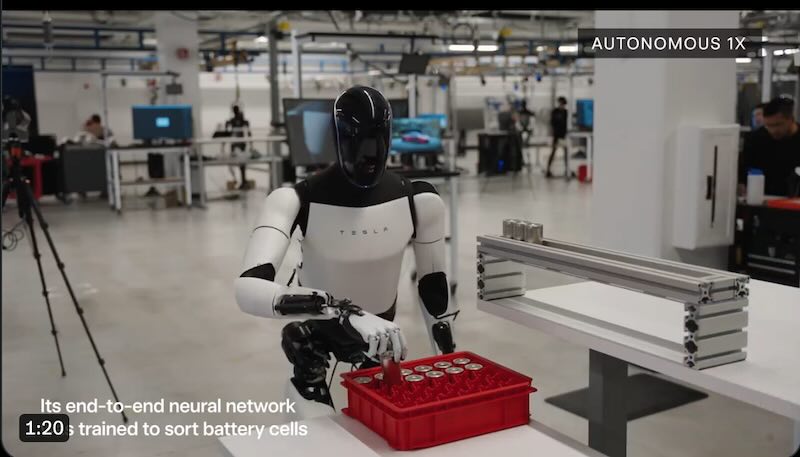At the ALL-IN Summit, Elon Musk shed light on Tesla’s ambitious Optimus robot project, potentially reshaping the landscape of automation and human-robot interaction. Elon insights offer a glimpse into a future where humanoid robots could become as commonplace as smartphones, with far-reaching implications for labor markets and daily life.
Elon’s discussion of Optimus at the ALL-IN Summit centered on a fundamental principle of manufacturing: as production scales up, costs tend to approach those of raw materials. This concept, when applied to the Optimus robot, presents a tantalizing prospect for widespread adoption.
Unlike cars, which are bulkier and heavier, the Optimus robot’s smaller form factor could lead to significantly lower production costs. Elon projects that with sufficient scale, manufacturing expenses could dip below $10k per unit, with a potential retail price around $20k.
Report by Adam Jonas from Morgan Stanley has shed light on the eye-watering costs associated with bringing this humanoid helper to life, Tesla Optimus Robot BOM breakdown reveals high costs, challenges ahead.
Before Optimus can hit the assembly lines en masse, Tesla faces several hurdles:
- Elon emphasized the need for at least three major design revisions before Optimus is ready for large-scale production. These iterations will likely focus on refining the robot’s functionality, efficiency, and cost-effectiveness.
- The timeline for reaching production levels of over a million units annually is estimated at 5 to 6 years. This ambitious target underscores Tesla’s commitment to making Optimus a ubiquitous technology.
Musk’s vision extends beyond mere production numbers. He foresees a future where humanoid robots outnumber humans, potentially reaching ratios of 2:1 or even 3:1. This projection raises intriguing questions about the role of robots in society and their impact on various industries.
One of the most fascinating aspects of the Optimus project is its approach to replicating human anatomy, particularly in hand design. Tesla’s engineers are gaining insights into the intricacies of human physiology as they work to create more dexterous robotic hands.
The current Optimus hand design, with actuators located within the hand itself, offers 11 degrees of freedom. While impressive, this falls short of the human hand’s capabilities.
Tesla’s prototype for the next iteration of Optimus moves the actuators to the forearm, mirroring human anatomy. This shift is expected to increase the degrees of freedom to 22, significantly enhancing the robot’s dexterity and potential applications.
Tesla Optimus project stands poised to redefine our relationship with technology. With each advancement, we edge closer to a world where robots don’t just assist us but become integral parts of our daily lives.
Related Post
Tesla Optimus Patent Reveals Secrets of Its Cable-Driven Robotic Hand
Tesla Optimus Robot’s Dexterity in Handling Real-World Tasks via Running Entirely End-to-end
